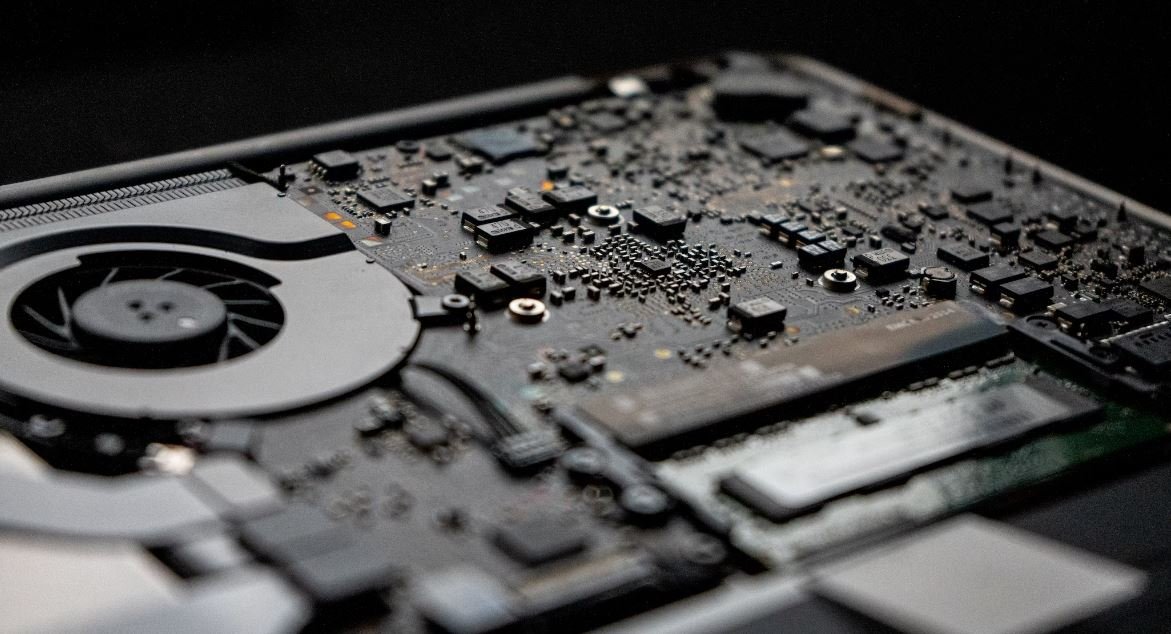AI SmartThings
The rapid advancement of Artificial Intelligence (AI) technology has brought about the emergence of smart devices and appliances known as AI SmartThings. These innovative products are equipped with AI capabilities that enable them to learn and adapt to user behavior, making them more intuitive and efficient than ever before. From AI-powered voice assistants to smart thermostats and security systems, AI SmartThings are transforming the way we interact with our surroundings and enhance the overall quality of our lives.
Key Takeaways
- AI SmartThings utilize AI technology to enhance user experience and efficiency.
- These smart devices learn and adapt to user behavior, making them more intuitive.
- AI SmartThings include voice assistants, thermostats, security systems, and more.
- They enable seamless automation and control over various aspects of our lives.
AI SmartThings are designed to simplify and streamline various tasks in our day-to-day lives. By leveraging AI algorithms and machine learning capabilities, these devices can better understand user preferences and needs, resulting in more personalized and efficient experiences. Voice assistants such as Amazon Alexa and Google Assistant are prime examples of AI SmartThings that have become increasingly popular in households worldwide. They can perform a wide range of tasks, from playing music and controlling home appliances to answering questions and providing weather updates.
Additionally, AI-enabled thermostats such as the Nest Learning Thermostat and Ecobee SmartThermostat offer advanced energy-saving features. These devices learn your temperature preferences and daily routines, automatically adjusting the temperature based on occupancy patterns and weather conditions. This not only ensures optimal comfort but also helps reduce energy consumption, leading to potential cost savings on utility bills.
| AI SmartThings | Examples |
|---|---|
| Voice Assistants | Amazon Alexa, Google Assistant, Apple Siri |
| Thermostats | Nest Learning Thermostat, Ecobee SmartThermostat |
| Security Systems | Ring Video Doorbell, Arlo Pro Cameras |
Smart security systems equipped with AI capabilities provide enhanced protection and peace of mind. Devices like the Ring Video Doorbell and Arlo Pro Cameras utilize AI algorithms to identify and notify users of potential security threats. They can differentiate between people, pets, and other objects, sending real-time alerts to users’ smartphones and allowing them to monitor their homes remotely. This level of intelligence and surveillance helps improve home safety and enables users to take necessary action promptly.
Automation and Control
The integration of AI technology into SmartThings allows for seamless automation and control over various aspects of our lives. Whether it’s managing lighting, appliances, or even gardening, AI SmartThings can simplify everyday tasks, freeing up time and energy. For example, AI-powered gardening systems can analyze soil conditions, weather forecasts, and plant requirements to automatically water and nourish plants as needed, resulting in healthier and more vibrant gardens.
Furthermore, AI SmartThings enable users to create personalized routines and schedules that align with their specific needs and preferences. Through intuitive interfaces and app integration, users can automate multiple devices to perform a series of actions upon a single command or trigger, providing a truly connected and smart living experience. The possibilities are endless, from waking up to a perfectly brewed cup of coffee to having the lights and music adjust according to your mood as you arrive home.
| AI SmartThings | Automation Features |
|---|---|
| Gardening Systems | Automated watering, fertilizing, and plant care based on data analysis |
| Home Lighting | Customizable lighting schedules and scene automation |
| Smart Appliances | Integration with voice assistants for voice-controlled actions |
A notable benefit of AI SmartThings is their ability to continuously learn and improve their performance over time. These devices leverage machine learning algorithms to analyze data and adapt to user preferences, enabling them to provide increasingly accurate and personalized experiences. Whether it’s understanding and responding to voice commands more accurately or fine-tuning temperature settings based on individual comfort levels, AI SmartThings constantly strive for improvement and adjustments.
“The rapid advancement of AI technology allows AI SmartThings to revolutionize our daily lives in unprecedented ways, enhancing convenience, efficiency, and safety.”
The Future of AI SmartThings
AI SmartThings represent a significant milestone in the evolution of smart technology. As AI continues to advance, we can expect even more sophisticated and intelligent devices in the future. The integration of AI technology with Internet of Things (IoT) devices and wearables will further expand the capabilities of AI SmartThings, creating a truly interconnected and seamlessly automated environment. From smart homes to smart cities, AI SmartThings are set to play a vital role in shaping the future.
Conclusion
AI SmartThings are transforming the way we interact with our surroundings, offering enhanced convenience, efficiency, and safety. From voice assistants to thermostats and security systems, these devices leverage AI technology to provide personalized experiences and streamline everyday tasks. With continuous advancements and future possibilities, AI SmartThings are reshaping our living spaces and paving the way for a smarter and more connected future.

Common Misconceptions
Misconception 1: AI will replace human jobs completely
One of the prevalent myths surrounding AI is that it will eliminate the need for human workers entirely. While AI has the potential to automate certain tasks, it is unlikely to completely replace human jobs. Some key misconceptions around this topic include:
- AI will lead to unemployment on a massive scale.
- AI cannot replicate the emotional and creative aspects of certain jobs.
- AI will only complement human workers, not replace them.
Misconception 2: AI is infallible and always makes the right decisions
Another misconception is that AI is flawless and never makes mistakes. However, the reality is that AI systems can still have limitations and can make errors. Some relevant misconceptions include:
- AI can solve all problems without any wrong outcomes.
- AI is always impartial and unbiased in decision-making.
- AI does not require human intervention or oversight to function effectively.
Misconception 3: AI is a super-intelligent, conscious entity
There is a common misconception that AI possesses human-like intelligence and consciousness. However, AI, at its core, is a collection of algorithms and data. Some key misconceptions include:
- AI systems share the same level of awareness and consciousness as humans.
- AI can think and reason on its own like a human being.
- AI possesses the ability to develop emotions or personal desires.
Misconception 4: All AI technologies are self-learning and autonomous
Many people assume that all AI technologies have the capability to learn and act on their own. However, not all AI systems are self-learning or autonomous. Some misconceptions surrounding this topic are:
- All AI technologies can adapt and learn from new experiences without human intervention.
- AI algorithms are self-aware and can continually improve their performance.
- AI can operate independently without any human guidance or supervision.
Misconception 5: AI is only meant for large companies and organizations
Some individuals believe that AI is exclusively reserved for big corporations or organizations with significant resources. However, AI technology is becoming increasingly accessible to individuals and small businesses. A few misconceptions in this regard are:
- AI implementation requires massive financial investments and resources.
- AI is not suitable or relevant for small-scale applications.
- AI innovation is limited to tech giants and research institutions.

Smart Home Penetration by Region
In recent years, smart homes have gained significant popularity around the world. This table illustrates the percentage of smart home penetration in different regions:
| Region | Penetration |
|---|---|
| North America | 37% |
| Europe | 25% |
| Asia Pacific | 18% |
| Middle East | 8% |
| Africa | 6% |
Top 5 Countries with the Most Connected Homes
The following table lists the top five countries in terms of the number of connected homes, showcasing the extent of smart home adoption:
| Country | Number of Connected Homes (in millions) |
|---|---|
| United States | 45.6 |
| China | 33.4 |
| Germany | 15.8 |
| United Kingdom | 11.2 |
| Japan | 9.7 |
Smart Appliance Adoption by Type
As the Internet of Things expands, smart appliances are becoming more prevalent in households. This table presents the percentage of smart appliance adoption across different types:
| Appliance Type | Adoption Rate |
|---|---|
| Smart Thermostats | 54% |
| Smart Lighting | 41% |
| Smart Refrigerators | 38% |
| Smart Security Systems | 32% |
| Smart Washing Machines | 29% |
Impact of Smart Homes on Energy Efficiency
Smart homes have the potential to optimize energy consumption. This table demonstrates the reduction in energy usage achieved by incorporating smart devices:
| Smart Device | Energy Saved (%) |
|---|---|
| Smart Thermostats | 20% |
| Smart Lighting | 15% |
| Smart Appliances | 12% |
| Smart Power Strips | 8% |
| Smart HVAC Systems | 25% |
Smart Home Security Breaches by Type
While smart home technology offers numerous benefits, it also poses certain security risks. The table below showcases the different types of security breaches encountered:
| Security Breach | Frequency |
|---|---|
| Unauthorized Access | 43% |
| Malware Attacks | 27% |
| Data Leaks | 18% |
| Physical Tampering | 9% |
| Phishing Scams | 3% |
Economic Impact of Smart Homes
The integration of Artificial Intelligence (AI) in smart homes has led to significant economic growth. This table highlights the economic impact of smart home technology:
| Year | Economic Impact (in billions USD) |
|---|---|
| 2019 | 285 |
| 2020 | 351 |
| 2021 | 425 |
| 2022 | 489 |
| 2023 | 554 |
Smart Home and Health Monitoring
Smart home devices also play a crucial role in health monitoring. This table displays the percentage of people using smart devices for health-related purposes:
| Health Monitoring | Percentage |
|---|---|
| Heart Rate Monitoring | 49% |
| Sleep Tracking | 36% |
| Blood Pressure Monitoring | 30% |
| Activity Tracking | 27% |
| Remote Patient Monitoring | 19% |
Smart Home Assistance Platforms
Various companies offer smart home assistance platforms that are utilized by consumers worldwide. This table presents the market share of leading assistance platforms:
| Assistance Platform | Market Share |
|---|---|
| Amazon Alexa | 35% |
| Google Assistant | 29% |
| Apple HomeKit | 15% |
| Samsung SmartThings | 12% |
| Microsoft Cortana | 9% |
Conclusion
The rise of AI-powered smart homes has revolutionized the way we live, offering increased convenience, energy efficiency, and even health monitoring. With high adoption rates and the economic impact on the rise, smart homes are transforming households worldwide. However, it is crucial to remain vigilant against potential security breaches to ensure a seamless and safe smart home experience.
Frequently Asked Questions
What is AI SmartThings?
AI SmartThings is a smart home automation platform that uses artificial intelligence to control and manage devices in your home.
How does AI SmartThings work?
AI SmartThings uses machine learning algorithms to analyze data from your smart devices, learn your behaviors and preferences, and automate actions based on that knowledge.
What kind of devices can AI SmartThings control?
AI SmartThings can control a wide range of devices including lights, thermostats, door locks, security cameras, speakers, and more.
Can I control AI SmartThings with my smartphone?
Yes, AI SmartThings has a mobile app that allows you to control and monitor your smart home devices from anywhere.
Is AI SmartThings compatible with other smart home products?
Yes, AI SmartThings is compatible with a wide range of smart home products from various manufacturers, thanks to its open ecosystem.
Can AI SmartThings learn and adapt to my routines?
Yes, AI SmartThings uses advanced machine learning techniques to learn your routines and automatically adjust your smart home devices to match your preferences.
Is AI SmartThings secure?
Yes, AI SmartThings takes security very seriously. It uses encryption protocols, secure connections, and regularly updates its software to protect your smart home.
Can AI SmartThings be integrated with voice assistants like Amazon Alexa or Google Assistant?
Yes, AI SmartThings is compatible with popular voice assistants, allowing you to control your devices using voice commands.
How easy is it to set up and use AI SmartThings?
AI SmartThings provides user-friendly setup instructions and guides. Most users find it easy to set up and use.
Where can I buy AI SmartThings?
AI SmartThings can be purchased from various online and offline retailers. Check the official website for a list of authorized sellers.




